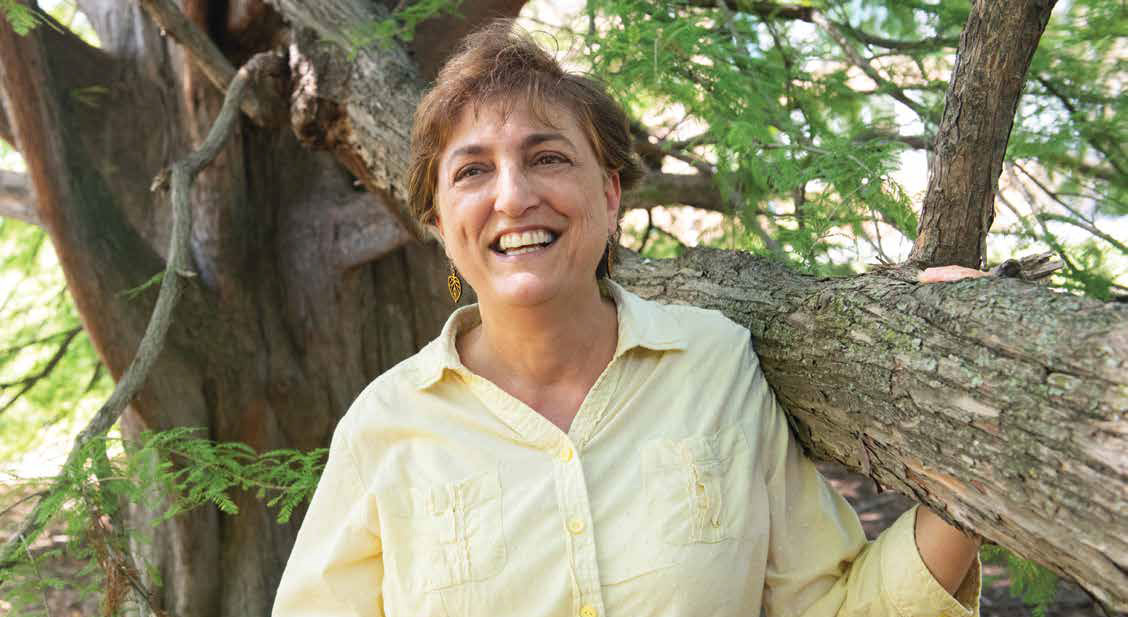
Connecting with Science Ensures Natural Resources Resilience
Next Generation of Environmental Stewards

Each spring, a majority of the Sandhill Crane population congregates on one 80-mile stretch of central Nebraska. The scope of this natural wonder is awe-striking and attracts thousands of people to Nebraska every year.
The future health of these birds largely depends on the actions of people. The hope is that those who had the experience of watching the migration will be more inspired to participate in conservation, according to Lisa Pennisi, human dimensions specialist and associate professor of practice in the School of Natural Resources at the University of Nebraska–Lincoln.
Pennisi’s area of focus in human dimensions research uses experiences and emotional connections with nature to motivate people to make sustainable choices for nature and the environment.
“While people need to understand the science behind natural resources, it is equally important to work on people’s environmentally responsible behaviors because nature manages itself just fine without us,” Pennisi said.
Pennisi combines classroom experiences, science communication and Extension education to inspire others to make responsible daily decisions to ensure the resiliency of natural resources.
“We have to motivate everybody in all areas of society — business, billionaires, politicians, individuals — to care and to take action, because we all matter. We can't sit there and think, ‘I'm just one person, what can I do?’” Pennisi said.
In order to build natural resources resiliency, people simply need to know what to do and how to be good environmentalists. The correct tools are essential.
Preparing Future Environmental Stewards
Through coursework projects, Pennisi prepares students to connect general audiences with nature. The end goal to give students hands-on, real-world experiences that gain them the skills needed to succeed in their future careers.
For example, Backyard Wildlife Day, a project for the Zoo Keeping and Management course, requires students to be a zookeeper (without animals) for a day, leading interactive education activities with Lincoln Children’s Zoo guests.
Further, students in Pennisi’s Environmental Education and Interpretation course each contribute 20 hours of service to a variety of agencies in Nebraska. Agencies include Nebraska Game and Parks Commission and the Ruth Staples Child Development Laboratory, a nature-based preschool. Designing and implementing thoughtful curriculum and activities to engage different audiences allow students to learn firsthand how to be effective environmental educators.
Pennisi’s students also take ownership of the Backpacks for Adventure initiative. Since 2017, this program brought 105 science-themed backpacks into Community Learning Centers, an afterschool program for elementary children in Lincoln, Nebraska. For example, the wetland backpack includes a fish identification booklet, bingo, flashlights, a fishing bobber and much more. All items are intended for elementary children to check out from the Community Learning Centers and engage whole families in environmental education activities that encourage an appreciation of nature and understanding of science.
Finally, students in her Environmental Education Curricula course become certified in national environmental education curriculum, spanning pre-K-12 activities in various areas of natural resources. According to Pennisi, students can build environmental education programs based on the resources from certification.
Nebraska’s Advantage
IANR’s philosophy on Extension and research programs is what makes Nebraska truly advantageous in natural resources management. Extension professionals dedicate their time to provide the most up-to-date health, business, agriculture and natural resource information so Nebraskans can make the most informed decisions possible.
Pennisi wants to see it go one step further, ensuring the message is delivered in a way that motivates change. People who feel emotionally connected to nature are more likely to want to care for it, she said.
“We want people to take care of Nebraska and the rest of the planet. We want them to love Nebraska,” Pennisi said. “Understanding the science is not what’s most important. What’s important is that people care enough to change their behavior.”
Ecotourism in Nebraska
Ecotourism is tourism occurring in natural areas, with an emphasis on sustaining them, their flora and fauna, and the local people and their culture. Ecotourism facilitates emotional experiences that connect people to nature and foster responsible environmental stewards.
“We have studies that show people in forests or people whale watching can have really deeply moving emotional experiences that can profoundly impact them, making them want to do more to help. Ecotourism can be a really powerful tool to help people get connected to nature and become better stewards,” Pennisi said.
Pennisi said Nebraska offers especially powerful experiences, such as hiking at Toadstool Geologic Park in northeast Nebraska or exploring the diverse wildlife across the state. The Sandhill Crane migration, which brings millions of dollars in revenue each year, is also an example of ecotourism in Nebraska.
But communities must be cognizant that the tourism itself does not disturb the natural resources the people came to see. For example, “Keeping in mind the state needs good tourism opportunities to boost the economy and provide people with jobs, we need to make sure we don't disturb the crane migration, or they will disappear,” Pennisi said.
Ethical ecotourism does just that by conserving wildlife and the environment and sustaining the well-being of local communities, Pennisi said.
By showcasing Nebraska’s bountiful natural resources to create ecotourism opportunities that connect people to nature, future generations of Nebraskans can boost economic and environmental sustainability for years to come.